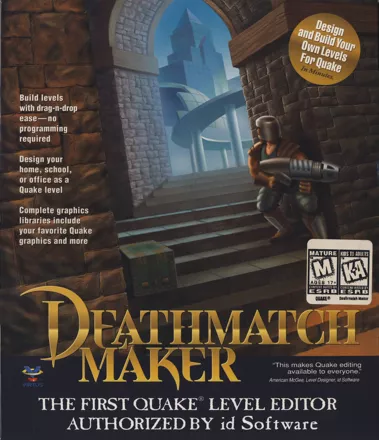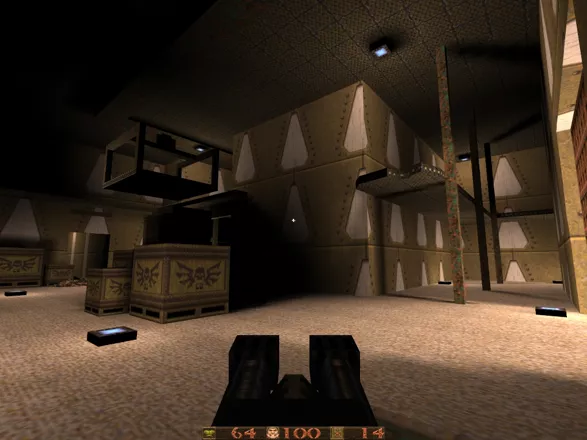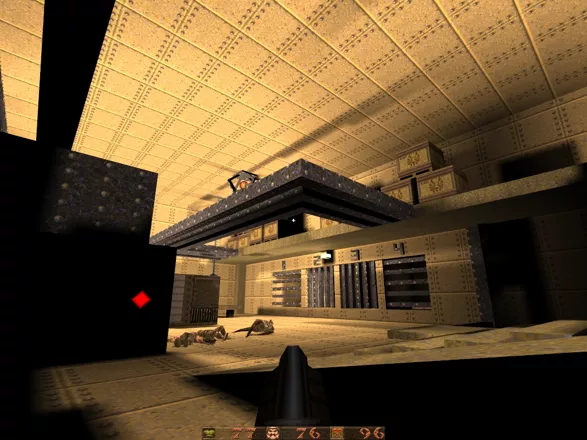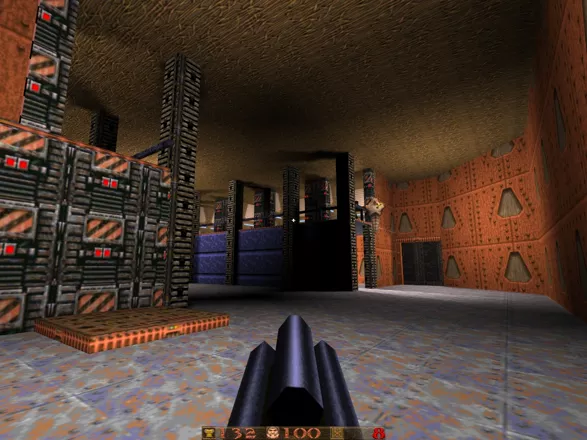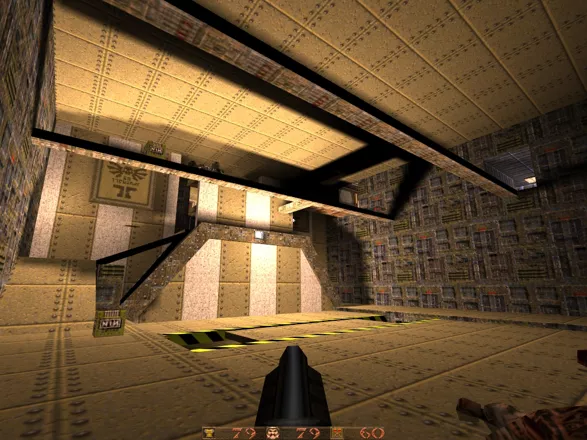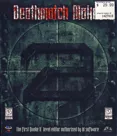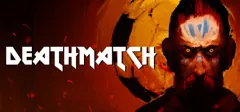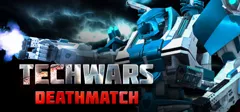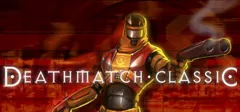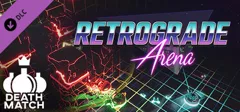Deathmatch Maker
Description
As the developer suggests, Deathmatch Maker is "the first Quake level editor authorized by id Software". What made it special among the editors of the time was its drag-and-drop interface. Unlike the standard approach of building rooms step-by-step, out of scratch, DMM offers the would-be mapper a collection of basic templates and 3D shapes. Once the basis is formed, texturing, entity placing and lighting is also done through a simple, user-friendly interface. A real-time 3D window lets the user to explore his creation without compiling the in-progress map and launching the game.
The package also contains a dozen of third-party editing utilities, as well as the Virtus' Episode, a brand new set of connected levels spanning over two episodes and featuring a different boss.
Groups +
Screenshots
Credits (Windows version)
35 People · View all
| Lead Engineer | |
| Programming/Engineering | |
| Quality assurance | |
| Product management | |
| Product Marketing | |
| Quake content acquired | |
| Fulfillment | |
| Channel sales and marketing | |
| Media relations | |
| Webmastering | |
| Documentation compiled and written | |
| Produced | |
| Designed | |
| Portions written | |
| [ full credits ] | |
Reviews
Critics
Average score: 60% (based on 2 ratings)
Players
Average score: 3.1 out of 5 (based on 7 ratings with 1 reviews)
The Good
Albeit short-lived, what we have here is an old-school romp in the vein of the original game, consisting of eight levels spanning over two episodes (five for the former, three for the latter), besides a skill selection one and a boss confrontation to pack things up nicely. Even though this set of maps (appropriately named 'The Virtus Episode') is included as a complementary add-on to the main attraction of the product (which is Deathmatch Maker, 'the first Quake level editor authorized by id Software', with the selling point being its user-friendly interface, thus relative ease and speed of producing custom maps), its quality surpasses the editor itself, which looks outdated and clunky by today's standards.
I've seen many user-made maps over time created through the same editor that 'showcased' the limitations of Deathmatch Maker, the foremost being the inability to create solid geometry from scratch - the levels are to be build of pre-constructed 3d shapes that come packed with the application (think of Lego bricks). As a result, most of those maps created by amateur designers looked bland and uninspiring. I've always about this mediocrity as a fault within the editor itself rather than the mappers behind it.
However, The Virtus Episode proves otherwise. The maps within indicates that if enough time is given, it is possible to build a level through the use of this editor that looks as 'solid' as one that is build with WorldCraft, without a doubt the best editor out there for Quake. These levels do not feature that certain look of amateurism that is so prominent in other maps to be found on the net that are produced with Deathmatch Maker. Although a bit cramped and small in size (most of the maps are around one megabyte, the largest one being 1400 kilobytes) they retain the feel of the originals and do not irritate the player who is accustomed to id's (as well as Hipnotic's and Rogue's) standards in map making. Considering the fact that these maps are released just five months after Quake's release, they are simply brilliant. Both of the episodes promise a theme by their names (The Military Base for the former and The Cityscape for the latter) and the respective maps follow this nicely.
Quake itself is not a realistic game at all, however, Virtus' levels feels like they're progressing in a natural fashion rather than a collection of levels without thematic consistency that are chained one after another. Since the other unofficial, commercial add-ons that were released months after this one are prime examples of incoherency in this regard, this attention to detail is a big plus in my book. It is clear that the Virtus boys knew what they were doing - rather than mindless shoot-outs, these maps retain the standard procedure of progress in Quake levels which is based on the 'hunt for keys and look for buttons' idea. This simple premise may not mean much by today's shooters - in old-school games however, it forms the basis for complicated mapping, as the keys and buttons serve as 'beacons' for a level's interconnectivity, if you know what I mean.
While the first episode remains in the usual 'idbase' theme, the second goes for a bit experimentation, thus the name 'Cityscapes'. Here you'll find a metro station, an office complex and darkened back alleys in between. These themes are also to be found in free user-maps - the thing is, they came much later. Considering the time Virtus' maps are built, they surely prove interesting - I mean, who would have thought of such setups when the basis is all gothic?
The Bad
The main problem with creating custom content for Quake has always been the relative hardness of keeping consistency with the original material. Map making remains out of this, as observing id's originals with a keen eye helps an amateur mapper grasp the feel of the game. Creating brand-new art remains an issue however. The lack of proper tools being the prominent reason, most new textures or models are sure to be look out of place in the world of Quake. Virtus' could not keep away from this - it is pretty easy to spot which textures are third party. To our luck however, they did not went the 'quantity' way and throw in irritating stuff just for the sake of it. Low-quality textures are few and far in between, thus do not deter much from the experience. The one-and-only new monster, the unnamed boss at the end is pretty much covered by its surroundings too, so it does not look that horrible at all. Besides, his brand-new coding offers a good challenge as well.
Even though the maps themselves offer intricate layouts for their time, there is also an abundance of little details in some of them, constructed out of brushes of considerably smaller sizes. Simple as that, Quake is not a game for such detailing (like the computer consoles and bits of furniture in Half-Life), its visual brilliance lies more in the somewhat clunky and raw (but nevertheless slick and clean-cut) aesthetics of the original maps. All in all, such trifle detailing looks plain ugly besides hindering player progression.
On a final note, using the monsters that are meant for medieval and gothic themes on base levels is not a good idea at all - that's not Virtus' fault in its entirety though. I guess they tried to spice things up, as five maps of simple fashion 'idbase' populated by the same three enemies might prove boring ultimately.
The Bottom Line
In the end, it is surprising that a package of merely two episodes consisting of ten maps (which is meant to be a learning experience for would-be map authors) turns out to be the best of there is amongst the bunch of unofficial add-ons for Quake (Aftershock, Dark Hour, Q!Zone and Tremor namely, not counting the total conversions as they are to be considered separately). Judging by the time of its release, The Virtus Episode is surely an overlooked gem of sorts.
I don't know if it's worthy of a purchase as the included editor and a dozen other third-party editing tools are highly outdated and won't offer much of a use on current systems, however, the maps remain playable and offer around an hour of old-school fragging enjoyment. I'm sure it would prove worthy to get them someway or another if you persistently remain a Quake freak after all these years (just like me).
Windows · by erc (435) · 2009
Analytics
Upgrade to MobyPro to view research rankings!
Identifiers +
Contribute
Are you familiar with this game? Help document and preserve this entry in video game history! If your contribution is approved, you will earn points and be credited as a contributor.
Contributors to this Entry
Game added by erc.
Game added August 12, 2009. Last modified November 22, 2023.
